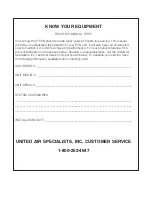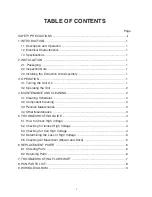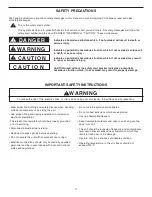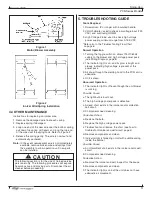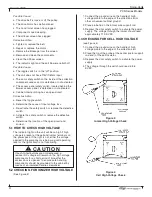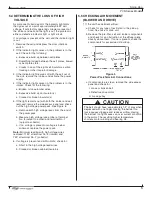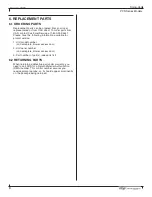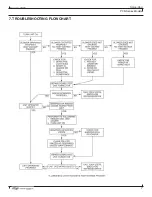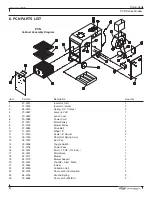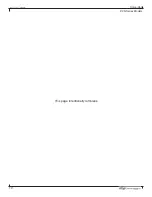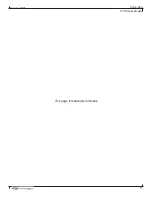
2
Revised 09/09
Smog-Hog
PCN Series Models
1. Plug the unit into a grounded 115V/1/60 Hz electrical
receptacle.
2. Lock wheel casters on unit to secure location.
Do not attempt to move the PCN unit by pulling on
the extraction arm or hood. Use handles on the back
of the unit to pull the PCN around the work area.
3. Turn the unit on by flipping the toggle switch to the
“on” position. The indicator lamp should glow, and the
unit’s drive fan should rotate. If either of these do not
function, refer to the Troubleshooting section within
this manual.
4. The unit is now ready for use.
3.2 OPERATING THE UNIT
The PCN moves 1,000 CFM of contaminated air away
from the source of generation. For good contaminant
capture, a few simple guidelines apply:
1. Locate the unit, arm and hood in anticipation of the
job(s) intended. Know the limitations of the unit and
the job.
2. Minimize the influence of cross drafts from outside air
sources.
3. Position the hood slightly higher than the source,
with the face of the hood approximately 45° from
horizontal. The hood shape is designed for high
velocity pick-up. It should be located no further than
18˝ from the contaminant source.
4. MAINTENANCE AND CLEANING
4.1 CLEANING SCHEDULES
To maintain maximum efficiency, use the following
suggested cleaning schedules:
1. Weld Smoke
• Weekly: Using compressed air, gently blow
components with high velocity air. Be careful not to
damage plates.
• Monthly: Soak components using instructions outlined
below. Collected contaminant varies greatly from one
application to another, so cleaning frequency should
be monitored and adjusted to maintain unit efficiency.
• The collecting pan should be emptied before dust
reaches the top of the pan’s internal baffles. Failure to
do so will cause re-entrainment of previously collected
dust into the airstream.
2. Oil Smoke
• Clean as required. When components become dirty,
the indicator light will dim, and arcing of components
will become frequent. Smoke may become visible
form the PCN exhaust. Soak cleaning of components
(see instructions below) at least every three months is
recommended.
• The collecting pan should be emptied as required to
prevent overflow.
4.2 COMPONENT CLEANING
1. Turn off the PCN and depress both push-to-test
buttons to remove residual charge from the
components.
2. Open the door and slide components out of the
cabinet. If the collected particulate is dry, gently
tap the components to remove loose particles.
Components can be cleaned by soaking in a hot
solution of industrial-grade cleaner that is safe for
use with the aluminum components in the PCN.
It is extremely important to thoroughly wipe clean all
high-voltage insulators whenever the components are
cleaned. Use a non-abrasive cloth to protect glaze on
the ceramic insulators.
For inorganic (e.g., iron oxide from welding) residue
removal, acidic-type cleaners with a pH from 1 to 1.5
are most efficient. To clean organic (most petroleum-
base oils) materials, alkaline base detergents with pH
from 10 to 12 are effective. Consult your supplier for
specific recommendations and application instructions.
Any cleaner must contain an aluminum inhibitor or be
otherwise made safe for use with aluminum.
Do not use temperatures exceeding 160° F. Do not
steam clean, as this may cause the aluminum plates
to warp. If detergent other than Smog-Hog brand is
used, care must be taken to ensure that it contains
an inhibitor so that it does not attack the aluminum
components.
Let the aluminum components soak for approximately
30 minutes, followed by agitation in the solution to
remove loosened dirt. If agitation is not possible, soak
time should be increased to compensate.
3. After removing components from the detergent
bath, immediately flush away any residue and rinse
thoroughly with hot water.
4. Shake off excess water and let components stand in
vertical position until they are dry to the touch.
5. Re-install components into the PCN cabinet, close
the door and turn unit on. If the unit crackles
excessively, or the indicator light fails to come on,
open the access door and continue to run the blower
to allow the components to dry thoroughly.
4.3 PERIODIC MAINTENANCE
1. At least every three months (or whenever
components are removed for soak cleaning), wipe
clean the ionizer and collection cell contact springs
and insulators located above the pre-filter. Clean out
the interior cabinet area.
2. With the PCN unplugged, brush clean all wiring
connections at the power pack and switches.
3. Check for drive belt tension and wear. One half inch
movement (with finger pressure) at the belt mid-point
indicates correct tension. Refer to Figure 1.
!
CAUTION
!
CAUTION
Summary of Contents for UAS SMOG-HOG PCN
Page 1: ...OWNER S MANUAL PORTABLE ELECTROSTATIC PRECIPITATOR SMOG HOG PCN ...
Page 11: ...7 Revised 09 09 Smog Hog PCN Series Models 7 TROUBLESHOOTING FLOWCHART ...
Page 14: ...10 Revised 09 09 Smog Hog PCN Series Models This page intentionally left blank ...
Page 15: ...11 Revised 09 09 Smog Hog PCN Series Models This page intentionally left blank ...


